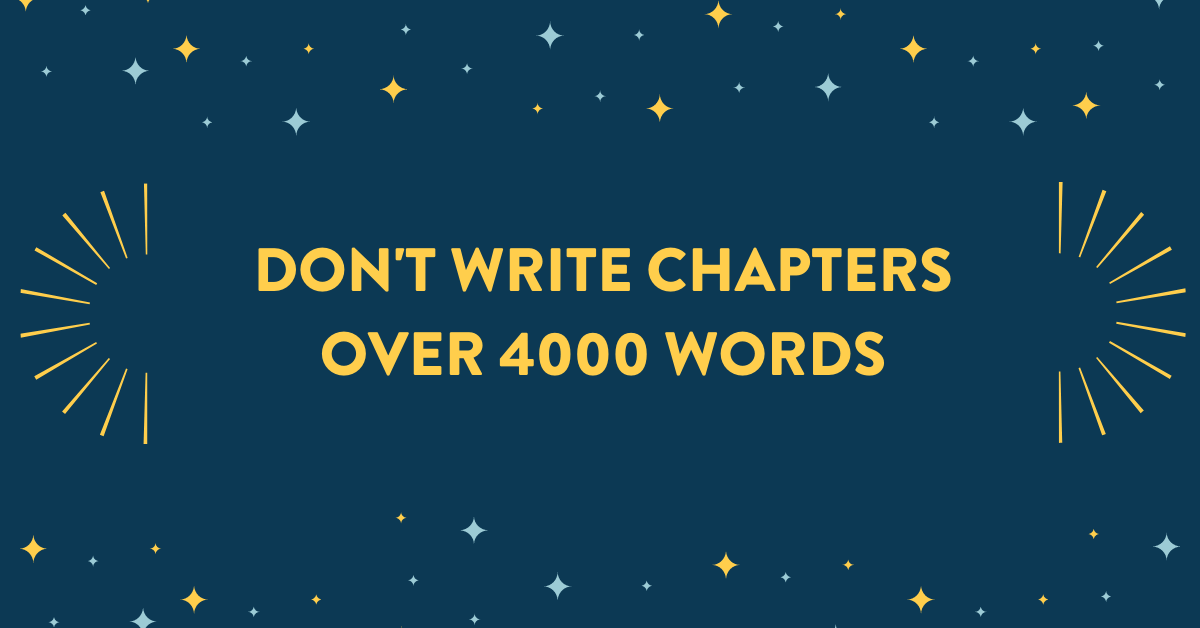 Most readers don’t pick up a novel thinking, “Okay. I’m going to read all 100,000 words of this right now.”
Most readers don’t pick up a novel thinking, “Okay. I’m going to read all 100,000 words of this right now.”
That’s why chapters exist.
Chapters give readers a stopping point without abandoning the book. They also allow readers to pick the book back up without feeling completely lost.
A short story is a fantastic model for a chapter because it offers a beginning and end (a complete story!). And it’s worth noting that the perfect length for a short story is around 4,000 words.
Make your chapters short, sweet, and to the point. Aim for that, and you’re sure to attract more readers.
Why Readers Love Shorter Chapters
 It seems like older generations love to shame young people for having short attention spans, but the rise of visual entertainment has affected everyone.
It seems like older generations love to shame young people for having short attention spans, but the rise of visual entertainment has affected everyone.
Fewer and fewer people want to sit through three-hour long operas. In that same vein, fewer readers want to read a 50 page chapter.
Chapters give readers a stopping point without abandoning the book. They also allow readers to pick the book back up without feeling completely lost.
Shorter chapters let the reader feel like they’re reading faster: With all that white space after the chapter ends, and before the next chapter begins, readers are flipping more pages.
Guess what? Readers love feeling like they’re reading quickly (it makes them feel smart).
Older Books Tend Toward Longer Chapters
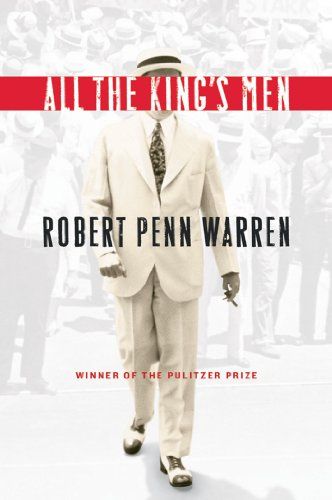 Take a classic like All the King’s Men — a wonderful book, to be sure, but not exactly light reading (certainly not a beach reach!).
Take a classic like All the King’s Men — a wonderful book, to be sure, but not exactly light reading (certainly not a beach reach!).
Robert Penn Warren’s 600+ page classic, published in 1946, is a high school AP Lit favorite and a monster to get through quickly. Part of that is because of the incredible length of some of its chapters—even up to 100 pages. Reading this book is a commitment, because you can’t pick it up and put it down easily without cutting off in the middle of a scene.
This can be said for many older books, especially canonical classics. This Side of Paradise by F. Scott Fitzgerald, published in 1920, has an average of 8,100 words per chapter. It’s a fantastic book, like much of Fitzgerald’s work, but no one would ever feel like they’re flying through it.
Like I said: For pre-1980s novels, longer chapter lengths are pretty common.
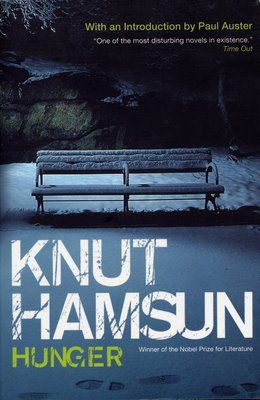 It doesn’t help that many older books are split into sections, usually less than ten, instead of chapters. Each of the four sections in Hunger by Knut Hamsun, published in 1890, averages about 18,300 words.
It doesn’t help that many older books are split into sections, usually less than ten, instead of chapters. Each of the four sections in Hunger by Knut Hamsun, published in 1890, averages about 18,300 words.
At the most extreme, you have the 1973 novel Gravity’s Rainbow by Thomas Pynchon. Those 305,000 words are split into just four sections with unnumbered dividers breaking up scenes. That means the average word count for each numbered section is a whopping 76,000. Sure, the dividers give readers a stopping point—but that feels like breaks in a singular chapter, which totally defeats the purpose of letting your readers take pride in how far they’ve come.
Even if you’re not using sections to number off parts of your novel, and even if your chapters aren’t pushing 70,000 words, still make sure you’re keeping it concise. If you want your readers to feel like they’re actually making progress and not just flipping pages with no checkpoint in sight, give them more official breaks to work towards.
Summary:
- This Side of Paradise: 8,100 word chapters
- Hunger: 18,300 words
- Gravity’s Rainbow: 76,000 words
- All the King’s Men: up to 100 page sections
Literary Fiction Prefers Longer Chapters
 Like those canonical classics, chapters in more literary modern novels often exceed the sweet 4,000 word count. These kinds of books—what people sometimes call the “new canon”—don’t have quick, action-packed plots, so they don’t need readers to be hitting a new chapter every ten pages.
Like those canonical classics, chapters in more literary modern novels often exceed the sweet 4,000 word count. These kinds of books—what people sometimes call the “new canon”—don’t have quick, action-packed plots, so they don’t need readers to be hitting a new chapter every ten pages.
Many of these books are award-winners. The chapters in A Little Life, Hanya Yanagihara’s Man Booker Prize finalist, flirt with the 50-page line a few times. Similarly, Jeffrey Eugenides’ novel Middlesex, which won the Pulitzer Prize, averages about 6,000 words a chapter.
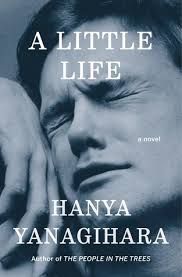
Of course, these examples are not representative of all highbrow literary fiction. Anthony Doerr’s All the Light We Cannot See won the Pulitzer prize, the height of literary fiction awards, and its chapters are very short, most of them under 3,000 words. Most of the novel’s chapters are only two or three pages long. It’s easy to pick up and put down. For casual readers, that’s much more appealing than flipping open a novel and having to search for a break. But Anthony Doerr is an exception, and it’s worth it to note that Doerr’s book became a bestseller!
A Prayer for Owen Meany by John Irving, National Book Award winner and three-time nominee, has an average word count per chapter of 26,400. These books are widely known and widely read and widely loved (and for good reason!), but they’re not exactly novels you’re going to fly through in a week.
Short chapters make it easier to waste two hours without even knowing it, because if the book is progressing quickly, chances are your time spent reading is, too. Readers don’t always want to pick up a book they know is going to drain them because it’s just so long—and actually feels it.
Bestsellers Love Shorter Chapters
 On the other hand, we all know those books that are crazy popular with the people… but maybe not so much with the critics. Nicholas Sparks is a great example of this. You’re hard pressed to find anyone who hasn’t been living under a rock for the past twenty years who doesn’t know his name.
On the other hand, we all know those books that are crazy popular with the people… but maybe not so much with the critics. Nicholas Sparks is a great example of this. You’re hard pressed to find anyone who hasn’t been living under a rock for the past twenty years who doesn’t know his name.
Chapters for his first and best-known novel The Notebook average about 3,200 words—the perfect length for casual readers.
As popular as they are, Dan Brown isn’t going to land a Pulitzer for his Robert Langdon series, whose chapters average about 1,100 words.
Along these same lines, bestselling page turners tend to have shorter chapters because then the action can keep rolling no matter how many times the reader has to stop and start reading. It’s pretty easy to read part of a Dan Brown thriller on your lunch break because the chapters are so short, you can still get through a sizable chunk of the book in half an hour.
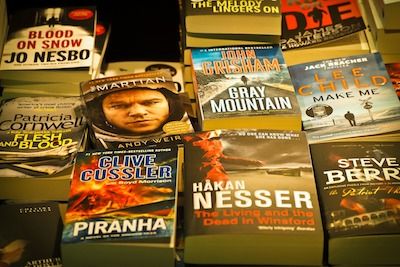 Stephen King is arguably one of the most popular and beloved page-turner authors of all time. His 1987 bestselling novel Misery has very short chapters — some as short as five paragraphs long (including dialogue).
Stephen King is arguably one of the most popular and beloved page-turner authors of all time. His 1987 bestselling novel Misery has very short chapters — some as short as five paragraphs long (including dialogue).
Bringing us back into the 21st century, Lee Child’s Jack Reacher installments both go back and forth between chapter length, but rarely (if at all) do chapters exceed 20 pages. The story action stays moving, the story stays tense, and the audience stays hooked.
In book club favorite Red Rising, Pierce Brown keeps all 44 chapters around 3,000 words. Sending members home with 10 chapters a week is much more attractive if the chapters are short. Again, you don’t want readers to feel like they have to carve out multiple hours to properly stop and start a section.
This idea also applies to popular YA novels. The Hunger Games, Suzanne Collins’ dystopian series, garnered enough readers to get four high-budget movies. The average word count for its chapters is 3,600.
All 55,535 words of Stephen Chbosky’s The Perks of Being a Wallflower are broken into four chapters and an epilogue. However, it is written entirely in letters, none longer than a couple pages. The letters offer a similar feel to chapters — you can brief sections, with many breaks.
Essentially, by keeping chapters brief you shorten the commitment a reader has to make to finish one part of the novel. People are much more likely to finish a novel if reading doesn’t feel like a chore.
The Bottom Line
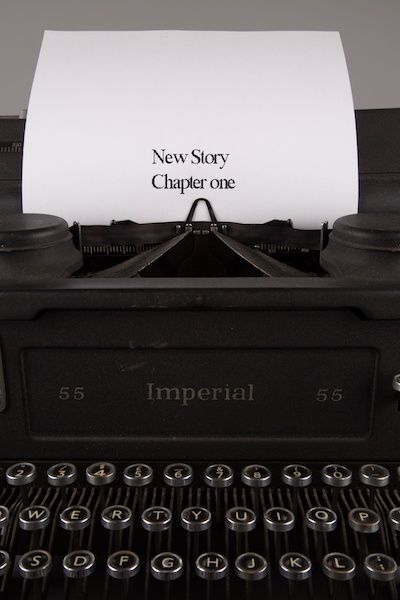 Chapter length for any books, classic or modern, can vary, but trends do exist.
Chapter length for any books, classic or modern, can vary, but trends do exist.
Bestselling books tend to have shorter chapters, especially under 4,000 words.
This is not to say that all modern novels worth reading are short-chaptered, or readers won’t be interested in your book if average chapter length exceeds 4,000 words. Some people don’t mind dog-earing a page halfway through a chapter that’s 1/4 of the whole book, and some people don’t mind spending three hours reading all the way through one part.
You just have to know your audience. If your audience can handle longer chapters, then go for it. But don’t make the mistake of tanking your book because your audience prefers the pacing of shorter chapters.
Most of the time, readers shouldn’t have to create too many of their own stopping points. It’s going to be a lot easier to get them losing sleep over a book if they can say, “Okay, one more chapter and then I’ll go to bed,” knowing that the chapter isn’t going to take them two-plus hours to finish.
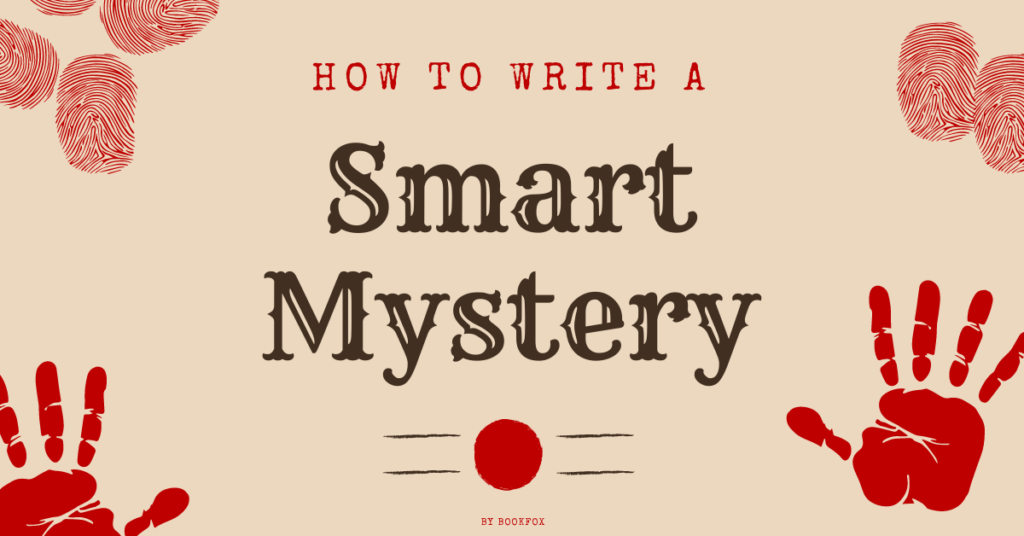
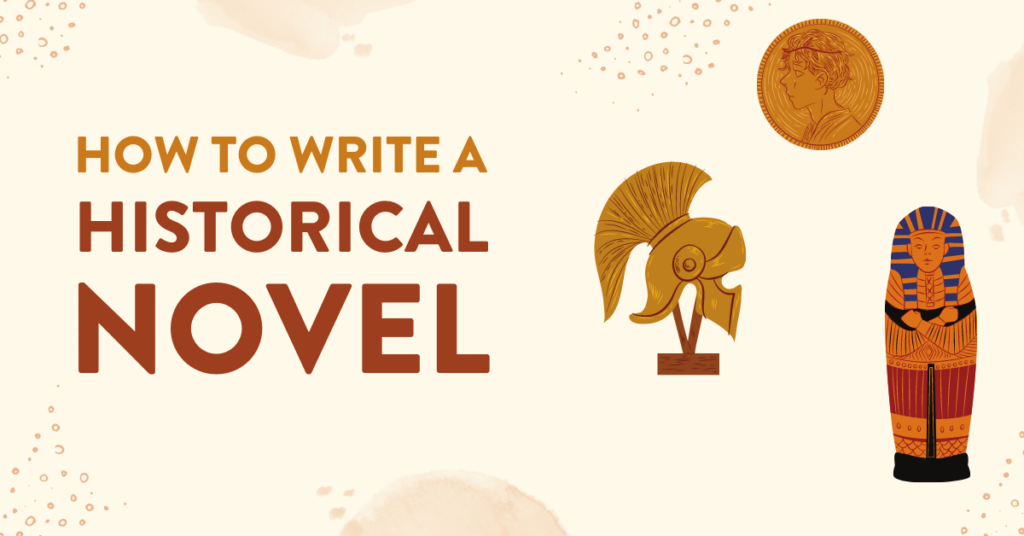

16 comments
Thank you for another very helpful article. I’ve worried that sections of my stories are too short, but this post confirmed that readers do like shorter chapters. Many people don’t want to read mini-novels within a novel anymore. At least I don’t. So now now I can stop beating myself up over page length and focus on content.
Yes, short chapters truly are very popular. Focus not only on content, but especially the beginnings and endings of each chapter, which is where the reader decides whether they’re going to keep reading.
This teaches me something about writing blogs for my website. Yoast SEO is always telling me I need more headings to break up my writing. Now I know why. Thank you!
Yes, excellent point. This notion of periodically breaking up the text is something that applies to all writing!
Thanks for the keen key points in your article, John. Your “know your audience” and “short, page-turner chapters (or short “acts” in my genre)!” are also absolutely relevant and essential to the intent and structure of my PB stories. Love receiving your educational and inspiring posts!
Thanks for the kind words! Happy writing!
Thank you for this very enlightening and understandable article. When I wrote my first book I to feared that my chapters weren’t long enough, I now know that it is not how long your chapters are it is what your chapters are attempting to relay to it audience. I am on my second book and now I can continue.
Yes, very true — it’s very rare for chapters to be too short. It’s usually the opposite which is the problem.
It’s true– when chapters are very long, they bold the reader and at times get him lost. The chapters in my first book, My Daughter, Fanta, My Daughter are relatively short.
This is really interesting, I always thought longish chapters were good chapters, turns out now I don’t need to make them so long at all, that really makes it a hell of a lot easier for me. Thanks.
I have no worries about my chapters being too long, in fact I have the opposite issue. I’m averaging about 1,000 words per chapter because of the way my book is being formatted (two main characters, the POV switches between them each chapter). Is this too short? Should I re-format my book to make it more “user-friendly” or to make it easier to write more in one chapter?
I found this information both helpful and interesting. As I mainly write for Children (5 – 8 years) the book in it’s entirety would not even reach the 4,000 word length chapter. Picture Books are a very strange animal indeed. Solid Plot, a Problem or Twist, two or 3 strong main characters and at least one solution, is the formula I use for a very rough guide. Writing for children you need relatable experiences to help hold their very short attention spans. A Children’s Book is a very Hit/Miss affair!
Brilliant suggestions, a very useful writers’ guide to understand reader psychology
This made me think of another question I have wrestled with – how much variance in chapter length is acceptable? Or is this even an issue? Is it preferable to settle on one length (say an average of 2500 words) and not deviate much from it, or is it more important to let the story dictate the lengths and that chapters can vary widely in length?
I think the chapters should vary according to the needs of the story. It’s not as though you have to be super rigid. I think the principle, though, is that shorter chapters tend to make the reader feel like they’re reading faster, and thus not be able to put down the book.
Great article John.